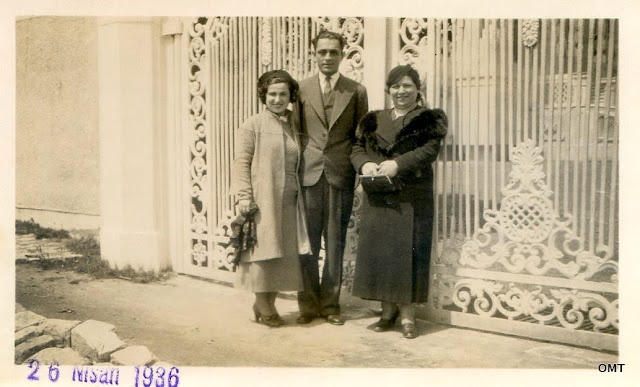Nine photos of Edwardian
children
“There is always one moment
in childhood when the door opens and lets the future in.”
Graham Greene
The children in these British photographs,
especially those taken in the north of England between 1905 and 1914, belonged
to the first generation in over two hundred years who were given a good chance
of surviving until adulthood. The mother of this baby, taken by John Brown
Smithson of Leyburn in Yorkshire, had grown up in a world where, statistically,
one in four children would die at birth and only half live past the age of
five. Disease took most of them but the real culprit was industrialization. In
factory towns the smog carried cadmium and lead and other dangerous metals that
poisoned infants. Studio scenes of adoring Mum with her newborn in this pose are
not that common. Generally photographers preferred the mother to be seated
although in this case Smithson got to show off his five headed badger rug.
In Citizen
Kane reporter Jerry Thompson sets out to discover the meaning behind Kane’s
dying word, ‘Rosebud’ and fails to discover it was the brand name of his sled
when he was a little boy. For Kane the sled is not only one of his earliest
memories, it takes him back to that age of innocence before everything he won
and lost destroyed him. You get
the feeling the rabbit in this image has been invested with similar power. In
years to come, most of her early childhood will be consigned to fog but she
will remember the rabbit. For a while it was her best friend.
Unknown child, unknown photographer,
unknown date but certainly taken at one of England’s seaside resorts about
1905. During the late eighteenth and early nineteenth centuries the major
resorts at Brighton, Blackpool, Southport and Scarborough were for the gentry,
who could afford the hotels and who followed fads such as water cures and
sulphur baths. By the 1850s and the expansion of railways some progressive
factory owners were sending workers off to the seaside for long weekends and in
1871 the Bank Holidays Act granted a generous four days to workers. Even then,
resorts were for adults not children. That began to change towards the late
nineteenth century and by the time this lad stood at the water’s edge it was
not just common, it was expected that parents would bring their children and
spend most of the holiday with them. Before long the motor car gave families
the freedom to spread out from the resorts and find their own spaces.
Our subjects are getting older. During the
late nineteenth century both girls and boys wore dresses up to the age of five
(and up to the 1920s pink signified boys, blue for girls). Both genders also
wore sailor suits, in fashion for boys since the 1840s when the future Edward
VII put one on but by the 1910s every five year old girl had to have one too.
Taxidermist and photographer Theo Upton Barber, AKA “Tubs”, was born in
Wisconsin but moved to England around the turn of the century and opened his
studio at 84 Preston Road in Faversham, Kent in 1911.
In an era when it’s not unusual for men to
extend their childhoods into their thirties, photos like this are a sharp
reminder that a century ago children began their move into adulthood as soon as
they handed down their child uniforms to their younger brothers and sisters,
around five years old. This boy isn’t even ten yet already he dresses like a
pocket version of his father, right down to the watch chain. Even his pose is
adult-like. The photographer was Frederick Southwell, who operated studios in
Battersea, Hammersmith and Wandsworth and apparently was no relation to his
namesake of the better known Southwell Brothers.
“Do
you know who is sitting on the other side of Lucy Henson?” Written in a child’s uncertain handwriting, posted from Batley,
near Leeds and addressed to a Mrs Rolandson of Grewelthorpse, near Ripon in
Yorkshire, we can assume that’s Lucy on the stile and by ‘the other side’ the
writer means of the camera. Again we get that notion that will increasingly
cease to have relevance as the twentieth century progresses, that the child is
just a pocket version of the adult.
The photographer is not identified but from
the quality of the print and the evidence of studio lighting we can say he or
she was a professional. The performers are strictly amateur, which is not to
say they are bad (‘ham’ seems a useful word here). There are hundreds of
thousands of photographs of children in fancy dress from the Edwardian period;
not so many of them performing for the camera as here. The wall at the back and
the parquetrie on the floor are sufficiently indeterminate to make it
understand whether this was taken in a private home or a school. I suspect the
latter.
More role playing, There was a moment,
roughly between 1895 and 1910, when people could believe that the upcoming
century would put technology to good and with our extended life spans, better
education and concordant freedoms most problems would disappear. By the time
this photo was taken that dream was in ruins. These lads are too young to have
flown in a proper warplane but just the right age to catch the experience the
next time it came around just over twenty years later.
This photo was likely taken in 1907, the
year twelve year old Frances Bradley Storr baptised babies but also adults into
her Primitive Methodist sect before congregations of several thousand.
Primitive Methodism sounds much what it was: passionate revival meetings, and
hellfire and damnation sermons by the likes of Miss Storr, who had feeling to
compensate for her lack of education or straitened background. Like the
Peculiar People of Plumstead and the New Forest Shakers from a few years
earlier, she espoused a religious empowerment of the working class that was
socialistic in everything but its politics. She was hardly the only child
preacher working in England at the time: Lonnie Dennis, Florrie Elkins , Gertie
Brackenbury and Jack Cooke being others, but stateside there were reputedly
dozens, working a kind of sideshow circuit. In the 1920s Frances and her mother
moved to Canada where she continued to preach. The photographer is unidentified
but Doncaster photographer Luke Bagshaw took a lot of her promotional shots.



































